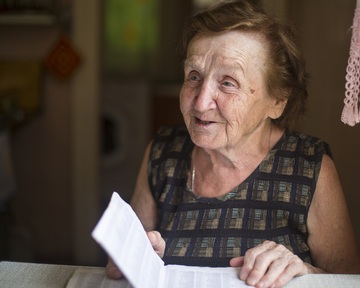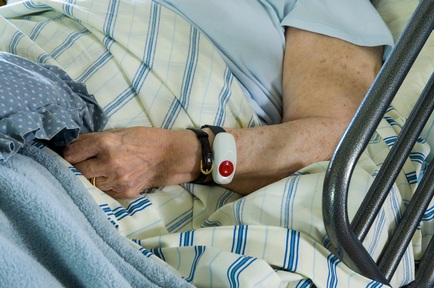Patient watchdog report reveals human and financial cost of getting discharge process wrong
More than 3,000 people from vulnerable groups participated in a study of discharge experiences and revealed basic problems with poor communication and coordination between people and services when planning patient discharges.
The inquiry carried out by Healthwatch England focuses on processes associated with the discharge process, including looking at ensuring people get home safely to prevent unnecessary suffering.
The report, titled ‘Safely Home: What happens when people leave hospitals and care settings?’ was compiled by more than 100 local Healthwatch services from across the UK, identifying the human and financial cost of current discharge processes.
‘There is a huge human and financial cost of getting discharge wrong’
Chair of Healthwatch England, Anna Bradley said: “Throughout the inquiry we have heard thousands of shocking stories about what happens when people leave hospital without the right planning and support. This is not a new problem, but what makes these findings worse, is that in many cases some pretty basic things could have made all the difference.
“There is a huge human and financial cost of getting discharge wrong. We hope that the increased focus on integration of health and social care, and pressure on finances will create a new impetus to fix it.
“Whether it is about properly helping new mums at risk with depression or making sure patients receiving end of life care are given the support they need to spend their final days at home with their loved ones rather than in hospital, everyone should experience a safe, dignified and well planned transfer of care.

“In some places this is done really well, but the good practice that exists is not being spread. To change people’s experiences we need everyone across health and social care to commit to putting the needs of individuals at the heart of the discharge process, ensuring that patients’ discharge plans are right for them and their specific recovery needs.”
Highlighting basic failings, the report raising concerns over hospitals not asking patients if they have a home or safe place to go to after discharge, or informing families when loved ones were discharged. In addition to information on new medications not being passed to carers and GPs.
Many discharge plans do not take into account patients other clinical needs, whether they have a suitable home environment or if patients have carer responsibilities themselves.
Janet Morrison, chief executive of Independent Age, the older people’s charity, said: “The ‘revolving door’ approach to hospital discharge is letting patients down. The report shows this is not just bad for patients but also for the system as a whole, with huge financial implications.
“The process can be confusing for older people and their families as they’re often asked to make complex and difficult decisions when they’re already under considerable pressure. It can be challenging for patients to find out what their options are and to know who to ask, especially for those who do not have family or friends to support them. With two-thirds of readmitted patients returning to hospital within a week, we need to start making changes now.”
During 2014, the National Audit Office (NAO) reported the NHS received one million emergency readmissions within 30 days of discharge, costing an estimated £2.4 billion.
Those most affected by poor discharges include, people with mental health problems and older people
Despite not all readmissions happening as a result of badly managed discharges, the report found almost 20 per cent were readmitted with the same issue within seven days of discharge, whilst a further one in four were readmitted within one month.

The report focuses on the human implication of unsafe discharges, the potential savings that could be made and outlines the potential for saving millions of pounds by getting discharge right the first time.
Those most affected by poor discharges include people with mental health problems and older people. The study found they were let down by lack of co-ordination between health, social care and community services and a further lack of support after discharge, frequently resulting in readmission.
While many felt discriminated against during their care and un-involved in decisions about discharge and whether they need extra help with carer responsibilities or housing support.
Those surveyed revealed their desire to be treated with compassion, dignity and respect, in addition to being involved in decisions about their treatment, care and discharge.
Further to highlighting improvements needed, the report praised good examples of discharge procedures. People living with mental health problems in Waltham Forest, London are supported by Care Navigators for up to 18 months after discharge, ensuring they attend follow up appointments about their treatment and reduce pressure on other services.
‘Often people with dementia remain in hospital far longer than others who have gone in for the same procedure’
The ‘My Discharge Project’ at the Royal Free Hospital in Hampstead, London, was created to support older people living with dementia and their family members.

Patients are assessed within 24 hours to get a better understanding of their needs and allocated a single point of contact to ensure when discharged, they will be safe.
When discharged, patients are given emergency contacts, and accompanied home with food and clothes if they require. The My Discharge team liaise with social care organisations and voluntary organisations to establish care visits, helping people living with dementia remain in their own homes and reduce readmissions.
Speaking on behalf of Alzheimer’s Society, head of policy, George McNamara, said: “One in four hospital beds are occupied by people with dementia. Hospitals need to become dementia friendly and guarantee hospital staff have the appropriate level of training to care for people with the condition.
“A recurring and overarching need is for health and social care to be better integrated to enable quality care and support. Too often people with dementia remain in hospital far longer than others who have gone in for the same procedure and deteriorate to the point where they are discharged to a care home, rather than returning to their home.”
Latest News Analysis
 04-Sep-19
Extra £1.5 billion announced for social care in Chancellor's Spending Review
04-Sep-19
Extra £1.5 billion announced for social care in Chancellor's Spending Review
 02-Jul-19
Department of Health forced to rethink care homes' nursing rates after legal challenge
02-Jul-19
Department of Health forced to rethink care homes' nursing rates after legal challenge
 18-Jun-19
Overnight care workers forced to sleep in offices and told 'bring your own bedding'
18-Jun-19
Overnight care workers forced to sleep in offices and told 'bring your own bedding'
 14-Jun-19
Back in the closet: Third of care home staff have had no LGBT+ awareness training
14-Jun-19
Back in the closet: Third of care home staff have had no LGBT+ awareness training
 11-Jun-19
PM candidates on social care: Rory Stewart calls fixing care an 'unfinished revolution'
11-Jun-19
PM candidates on social care: Rory Stewart calls fixing care an 'unfinished revolution'